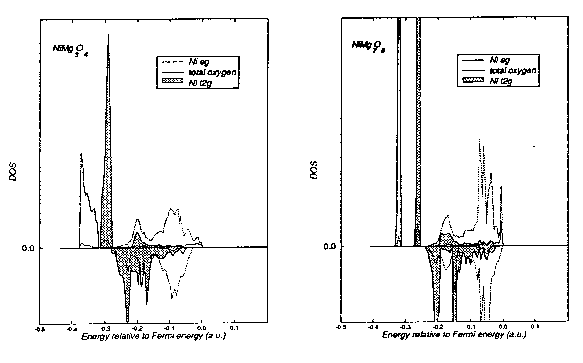11. NixMg1-xO  |



|
Finally, let's do calculations substituting magnesium ions in NiO at different concentrations. Above is shown the projected density of states for the valence band for four concentrations of Mg. We don't wish to compare these pictures directly with optical absorption spectra. However, it is enough to note that the relative energies of the states are essentially the same whatever the concentration of the Mg ions, just like in the spectrum we saw earlier. The band widths change because the overlap with a magnesium (with no d electrons) is much smaller than with another nickel ion, so as the number of Mg neighbours increase from NiO to NiMg7O8, the band widths decrease. But not the relative energies of the states. It's fairly clear that we're seeing something like 'independent ion' behaviour. OK - now Hartree-Fock theory isn't very good in general, so we expect that calculated properties of NiO would not be in perfect quantitative agreement with experiment. However, the qualitative nature of the ground state appears to be completely correct. This serves merely to illustrate the point that we appear to have found a good electronic structure approximation to the ground state for a 'strongly correlated' magnetic insulator. So where is the problem? |


